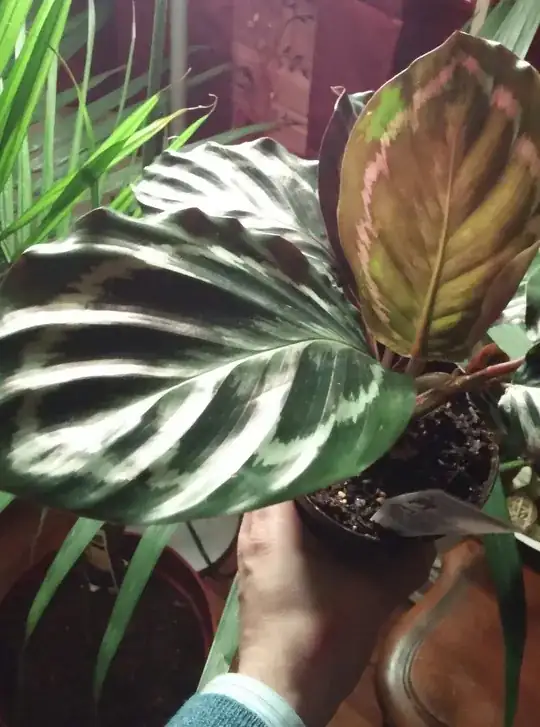That doesn't look like a rubber plant to me, but it might be related (i.e. some other kind of fig). I've seen several rubber plants and owned one for about 20 years, and I've never seen wavy leaves in a rubber plant (nor the white part circling the interior of each leaf). So, that does not seem normal for a rubber plant. If you break a leaf, it should have latex inside, if it's a rubber plant (White, thick liquid). All fig trees should have latex inside, although the amount and the color of the latex may differ. Some other plants contain latex, too, but an absence of it should help for identification.
Edit: Now that the tag picture is there, it's apparent that it's not closely related to rubber plants (not in the same genus or family). The tag tells you the genus, which is calathea. It's unclear by looking at the tag what "medallion" refers to (although generally items in quotes refer to a variety, rather than a species, but varieties are usually stated after the species, and not the genus). The botanical name is actually Calathea roseopicta (mentioned on the tag, too). (So, the species is roseopicta, and is sometimes split up into two words: roseo picta.) Rubber plants (ficus elastica) are in the ficus genus of the Moraceae family. Calathea medallion is in the Marantaceae family.
So, now that we know what it is, how do we care for it?
Water it every 2 to 7 days. Expect it to grow up to three feet tall. "Calatheas thrive in bright indirect or curtain-filtered sunlight; if only artificial light is available, provide at least 400 foot-candies. Night temperatures of 65 to 70 degrees and day temperatures of 75 to 85 degrees are ideal. The plants are at their best in a terrarium, but do quite well on a tray filled with pebbles and water to raise the humidity to about 50 percent. Keep the soil moist but not soggy. Feed established plants every two weeks with standard house-plant fertilizer diluted to half the recommended minimum strength; wait two or three months before feeding newly purchased or potted plants. Divide the strong roots and repot early each spring before new growth starts. For best results, use a packaged highly organic potting mixture formulated for African violets. Watch for spider mites.".
Note that Wikipedia gives a higher minimum temperature (61 degrees F.)

